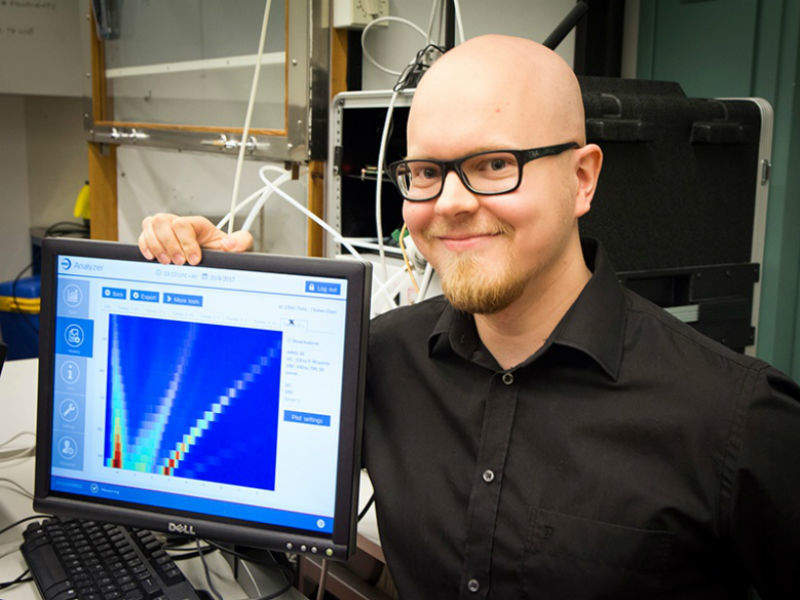
An electronic nose (e-nose) that can detect the most common bacteria causing soft tissue infections has been developed by researchers from the University of Tampere, Tampere University of Technology, Pirkanmaa Hospital District and Fimlab in Finland. The device can successfully differentiate between methicillin-resistant Staphylococcus aureus (MRSA) from methicillin-sensitive Staphylococcus aureus (MSSA) with an overall accuracy of 91%.
The e-nose works by producing an olfactory profile for every molecular compound it detects in the air surrounding the infected tissue. The results are then analysed by a computer which can differentiate between different compounds. Researchers behind the technology claim the invention takes a step forward from other devices because it does not require laboratory conditions or special training and is portable so would be well suited to outpatient use.
The speed, ease and accuracy of the e-nose could solve several issues plaguing current soft tissue infection diagnosis. As soft tissue diseases are very common, they are a significant burden on the medical industry. They need to be treated fairly quickly, especially postoperative wound infections, but the present diagnosis methods can take hours, if not days. Current rapid diagnosis is based on bacterial stains, cultures, and polymerase chain reaction assays. As a patient’s condition may deteriorate while waiting for results, antibiotic treatment is often administered empirically, which leaves room for an inaccurate diagnosis.
Doctoral researcher Taavi Saviauk from the Faculty of Medicine and Life Sciences at the University of Tampere said: “Our aim was to create a method for the rapid diagnosis of soft tissue infections. If we had such a method, treatment could be started in a timely manner and targeted to the relevant pathogen directly. This would reduce the need for empirical treatments and shorten diagnostic delays.”
This is not the first successful e-nose device to come from Finland. An electronic nose that can detect cancer was developed as part of a study last year at the Tampere University of Technology. Doctoral student Anton Kontunen developed the device for his MSc research along with fellow student Markus Karjalainen.
In order for cancer surgeons to successfully remove all traces of a tumour, the boundary between malignant and healthy tissue needs to be distinguished during the operation. To find out this information, surgeons take a frozen tissue sample and send it for histopathological analysis. This can take at least 20 minutes and results in surgeons and nurses having to wait whilst the patient remains under general anaesthetic. Just like the bacterial detecting e-nose, Kontunen’s e-nose provides a much faster method to gain this information, improves the practice for both surgeon and patient and could ultimately save healthcare services a lot of money.
How well do you really know your competitors?
Access the most comprehensive Company Profiles on the market, powered by GlobalData. Save hours of research. Gain competitive edge.

Thank you!
Your download email will arrive shortly
Not ready to buy yet? Download a free sample
We are confident about the unique quality of our Company Profiles. However, we want you to make the most beneficial decision for your business, so we offer a free sample that you can download by submitting the below form
By GlobalDataKontunen said: “If this technique were to spread worldwide for example breast cancer surgeries, we have estimated that with our system 100 000 women could be saved from reoperation of breast cancer every year, which would result in savings of approximately 1 billion USD in healthcare cost annually.”







